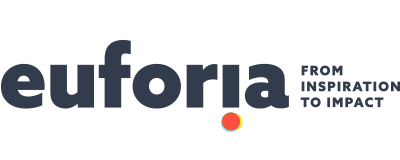Our summer volunteer Louisa Roos met with Stefanie Gfeller and had a conversation about Holacracy. Here is what she learned:
Stefanie, what do you do outside the scope of euforia?
I am currently self-employed. I work with organisations, teams and individuals to discover and develop their inherent potential by working with and on their challenges and conflicts. I work with them to become more natural at interacting together and dealing with their issues. With my work I also try to promote the circular structure discussed before and in general to find new solutions for our pressing challenges. I also continue to support the Holacracy implementation within Swisscom. At the moment my work is centred mostly around Berne and Zurich, but I would like to expand internationally.
I understand that you are involved in certain projects and the term ‘Holacracy’ was mentioned. Could you explain this concept?
I’m trained as a Holacracy coach. Holacracy is a new organisational concept, whereby the hierarchical, pyramidal structure of the working environment we are so used to, is replaced with an organic, circular structure. It is a hierarchy of actualisation, decision-making and leadership, where the power lies in a process rather than with a person. It is very experienced based. You start with a primary cell and all other cells emerge out of it. The structure is task and no longer people orientated. In the traditional organisation you usually have individuals around whom the structure is built. This leads to a lot of politics, shadow power structures and complicated decision-making processes. This is a very rigid structure. When Holacracy is implemented, it may be perceived as rigid too, but the process supports you to become agile and fast at working on your organisational structure. Furthermore, it helps you to eliminate the possible barriers, which are preventing you from doing your work.
How does this work practically?
Swisscom is already experimenting with this structure in some areas. Our former boss has given his authority into the holacratic process. In every circle there is a lead link, the person you organises everything and ensures that the people-role fit works. This person holds the purpose of the circle. Every circle also has a rep link. A super circle is required to assure that the former management configuration is not simply replicated into a circular structure.
Holacracy is very purpose orientated. When a new role is required, then it is first created and only then a suitable person to fit the role is sought. So an employee doesn’t have just one but multiple roles that constantly change and evolve. The approach is experience based, whereby it is discouraged to create out of thin air based on assumptions. Any tensions need to be processed and new roles, projects or actions need to be formed accordingly. This leads to a very fluid structure. A technological system to support this and assure full transparency is vital. Everything is captured in the system.
Do you require a very motivated work force for this holacracy structure to succeed?
To a certain extent, yes. You need to commit to working like this and this is not achieved within a day. The holocratic structure supports you as a person to evolve and become more aware. The whole structure is set up in a transparent way, so it’s very obvious what is going on. If you are not fulfilling your role, it will become evident after a certain period. In this case the team needs to consider whether they need to adapt something in their structure, create a new role or look for additional support. This encourages you to grow and become self-responsible. It is definitely a system for grown-ups.
Do most people enjoy this way of working or do some struggle to adapt?
The adaption period is undoubtedly quite challenging. Our society grooms us to work in hierarchal, pyramidal structures and to follow instructions. However, within a few weeks or months people start to see the benefits and begin to enjoy this way of working.
What would be your dream career path?
I don’t have a clear picture of which path I would like to take, but I strive to maintain a feeling of freedom and fulfilment. I am on my way to become a Process- and World worker. I would like to continue this path and constantly work in different contexts.
Stefanie Gfeller is a euforia volunteer and former staff who loves to experience, to learn and to bring together different contexts. She is a passionate collector of paradoxes who lives and works for: Purpose – People – Planet. She also works with organizations, teams and individuals to discover and develop their inherent potential and to transform their living and collaboration by working with and on their challenges.

